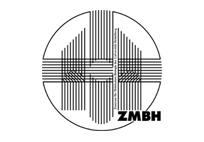LINE-1 (L1) is a retrotransposon capable of copying and inserting itself into new genomic locations. While this process can introduce genetic diversity, it also poses a significant risk to genome stability—especially in the context of cancer, where LINE-1 activation is frequently dysregulated. Moreover, LINE-1 activity can trigger the innate immune response, potentially leading to chronic inflammation. To counter these threats, human cells have evolved multiple strategies to restrict LINE-1 mobilization.
A research team led by Wenjing Qi and Ralf Baumeister (Project B09) has now uncovered a novel mechanism by which LINE-1 activity is regulated. They show that the LINE-1-encoded ORF1p protein recruits the cellular pseudokinase NRBP1 to ensure assembly of the LINE-1 RNP machinery—a prerequisite for retrotransposition. However, to prevent uncontrolled retrotransposition and the resulting genomic instability, cells have evolved a counter-regulatory mechanism involving NRBP2, a paralog of NRBP1. NRBP2 forms heterodimers with NRBP1 and promotes its degradation, thereby disrupting LINE-1 RNP assembly and suppressing retrotransposition.
Interestingly, phylogenetic analyses suggest that NRBP2 evolved later than NRBP1 and may have arisen specifically to fine-tune LINE-1 regulation, pointing to a case of evolutionary adaptation to safeguard genomic stability.
These insights not only advance our understanding of LINE-1 control mechanisms but may also offer new therapeutic avenues. In particular, modulating the activity of NRBP1 or enhancing NRBP2 function could represent promising strategies for treating diseases associated with aberrant LINE-1 activity.
For mor information see the press release of the University of Freiburg and/or the original study, which has been published in Nature Communications.
Figure: Ralf Baumeister









